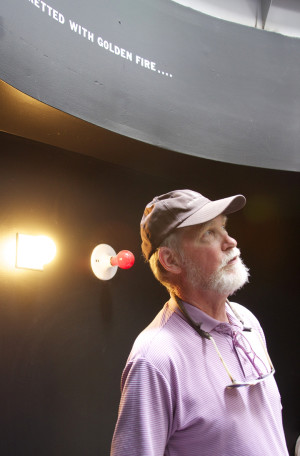by Bill Shaw
Equipment
I didn’t know about Outward Bound until I had grown and left the Rockies. I still don’t know much about how it got started, but I believe it originated in Boulder or somewhere similar about the time, or maybe just before, I was running through those fields around my house. I think some guys who liked to hike and climb and hang out in the wilderness began instructing others in the right way to do it, and that was the start. I never attended anything like that. Likewise, I never had the best equipment. Many of the friends who joined me in escapades later on had a much higher level of orientation and basic outdoor sense. Most had much more wisdom about the forests and mountains than me, passed to them by parents and grandparents and uncles. I was a bit of a pasteurized kid in that respect, not belonging to any scouting or official outdoorsy clubs and not having a family that was outdoor-oriented, but I learned a great many things just through association with them. Still, I don’t recall anyone on any of our camping and hiking and backpacking expeditions having a compass.
Hiking boots were another story. Specialty hiking boots had just appeared for the masses when I was in my early teens. Called “Waffle Stompers” at first, the move was quickly made to mountaineering boots, hard enough to support crampons, as the standard requisite everyday footwear by the time I reached high school. Everyone wore them, girls and guys. The bigger and heavier duty, the better. Big bells – jeans with huge flares at the bottoms, hiking boots and T-shirts, preferably rock concert souvenir T-shirts, were the uniform. My mom had bought me a pair of waffle-soled knockoff cheap boots before, but it was in the ninth grade that I picked out a pair of boots at Tuttle’s Trading Post that were the real deal. Dunham Continental Tyroleans, imported from Italy. Hard boxed toes that wouldn’t flatten, steel shanks, lugged Vibram souls reinforced with brass screws.
Those boots took about two months to break in so it didn’t feel like I was walking down the school halls in ski boots. But so it was with every kid. I rubbed this stuff called Sno-Cote wax sealer into them on a regular basis, and by the time winter hit they were as waterproof as rubber. If you put a pair of those on a kid today and said, “now run,” he’d think you were mad. But we got so used to them that we could indeed run in them, and jump, and walk through fire, and wade in beaver ponds, and kick steps into the snow on a hillside to form the stairs to the top of inner tubing runs. I felt invincible when I had those Tyroleans on my feet. I wore them for four years, and when I went to college the soles barely looked worn, except for where the molten beer bottle had melted a shallow impression into it. Vibram in 1974 was clearly one of those substances that was so good that someone had to intervene and cheap it down so that boots would wear out, because what passes for it today ain’t the same. I never got over hiking boots. I still own a couple pairs, and although, as mentioned, they aren’t nearly as unbreakable as the pair in which I strode though high school, I still love them, and always feel just a bit more mighty in them than not.
The wealthy families who indulged in skiing and exotic winter sports had high-end outerwear, but my friends and me wore what could be gotten at the local stores and from mail-order catalogs. Our shells consisted of jean jackets, layers of stuff with windbreakers on top, and the occasional leather fleece-lined coat. I ordered a down-filled winter parka from Herter’s Hudson Bay Company one year, on the advice of a friend who did a lot of outdoorsy stuff. That was the best outerwear I ever owned, and spent many a winter night around a bonfire in it.
We didn’t have backpacks to speak of until we were in high school. Some kids had military issue packs and rucksacks that could be slung over the shoulders. Most of us had Army surplus metal canteens, available also at Tuttle’s Trading Post. We entered the mountains with knives, canteens, matches and sometimes string, but little else in the way of being prepared. If freeze-dried food existed in our early years we didn’t have access to it, so we carried brown paper bags with PBJs and baloney sandwiches and an occasional tin of Spam. We weren’t out to prove anything back then. The only goal was to climb a hill or go around a lake and have fun doing it. Today people go out and try to outdo each other in how hard of an outing they can have. They have Eco-challenges and ultra marathons and Man Versus Wild. Makers of stupendously-light-titanium-air-injected-composite-pack frames sponsor them. Whatever. We tromped up the side of Mt. Shavano – straight up, no trail or switchbacks – with duffel bags full of Colt 45 tallboys and pork and beans and metal utensils. We didn’t do it to prove how hard (or stupid) we were, but because it seemed like the simplest thing to do. That’s not to say that we would’ve done things the same if our survival was at stake, or that today’s super hard outdoor jocks couldn’t have outdone us. In fact, after an evening of drinking malt liquor above the tree line and hurling empties and insults over at them, those people would surely have come over and smacked us around with their down-filled jockstraps.
And many at this point will say, “Typical local trash messing up the environment with no idea of how to do it ‘right.’” But they would be wrong on one point: we did not leave big stains on the earth. The morning after, hangovers and all, we would have been down there picking up those empty cans. I brought back chunks of rusted metal that were probably older than me. We took care about where we left bodily eliminations. We used snags and down timber for fires, and except for the time I inadvertently set the Poncha Springs dump on fire, we were never responsible for a forest fire anywhere. We sometimes broke the rules, but we made up for it many other times.
What about weapons? I spoke about pointed sticks – rarely did a kid needed much more than a good stout one to feel ready for anything. But how does one get a stick to be pointed? Why with steel, of course, specifically with an edge on it. I’ll discuss projectile-hurling devices later on, but a few words need to be said about knives.
I believed then, and still believe now, that the one main difference between Homo sapiens and the rest of the animal kingdom is an edged tool, preferably one consisting of at least three inches of razor sharp steel. In order to have a sharpened stick, a boy needs to have a blade. I don’t remember not having at least a pocketknife with me all my life. We traded them with each other in grade school. I don’t have any idea now where my associates got them back then, but I do know that I had several models in my possession by the second grade. They were forbidden in school, but we carried them anyway. They weren’t fancy or terribly good quality, but they held edges and worked pretty well for sharpening sticks and cutting small stuff.
I’m not sure which Christmas it was when my parents gave me my first legitimate blade, but I’d guess I was around ten or eleven. My brother and I both got hunting knives. Fixed-blade, full tang, four and a quarter inches of stainless steel in a leather sheath. Mine had a stacked leather handle, my brother’s was stag horn, and both had the trademark Western stamped into the mirror-finished steel. I think the reasoning was that we fished a lot and we needed tools to clean and dress our own catches. This was quite possibly one of the best Christmas gifts I ever got, and I still have the knife today. It was beautiful, and holy crap was it sharp.
Hundreds of trout have been opened with my constant companion blade, and plenty of wood shavings have been laid upon the ground by it. Only once did I slice open my own body with it, but I made it count. A friend and I were in the foothills below Methodist Mountain one afternoon and he, being a Boy Scout, wanted to set a snare he’d learned to make and catch a bunny or whatever else happened by. We had bent a sapling down to provide the spring, and all I needed to do was notch another branch to make the trigger. Always cut in a direction away from you, they say. I knew that, but in my haste to complete the other side of the notch discarded this most important rule and started cutting into the bark of the stick toward my hand. When that blade popped out of the wood and flicked toward me it moved so quickly I didn’t know it had even touched my finger until I felt a sting. Everyone knows that feeling you get when you first look down to see what happened, and the blood hasn’t started gushing yet, but a glimpse of what is probably bone makes you take a short breath before the adrenaline and panic hits.
Being resourceful and informed boys, we knew that constant pressure was required to stop bleeding. We had no bandages, but I was wearing a light windbreaker that had two stripes running down it vertically. It’s a good thing we had that knife so my friend could quickly remove one of the stripes, which served as a bandage on the way home. We stopped briefly at the Little River on the way so I could wash off all the dried blood before appearing at the house. The cut should have had stitches, but I didn’t tell my parents about it out of fear that they would take away my knife. So I just wrapped it tightly for a long time with Band-Aids, and it eventually stopped oozing and closed. No one ever questioned me about the Band-Aids, or why a stripe was missing from my windbreaker. (There are so many things that no one questioned me about as a kid. I find that kind of strange today, but it worked for me then.) The scar on my left pointing finger is always there to remind me which direction the blade should face.
Born On a Mountain, Raised In a Cave, A Rocky Mountain Memoir, by Bill Shaw, is published by XLibris and available from Amazon.


